Get posts by email
4 Steps to Making Homemade Soap
November 6, 2009
I've been blogging for many years and for a couple of those years I went through a soap phase, writing about soap making. This is one of those posts. I still make my own soap but I don't write about it much these days.
Some of the information may be a little dated, no doubt new books have been written and new discoveries made about different oils, etc.
This post shares the resources I used to learn to make soap, over 5 years ago, and tips for you to learn soap making also.
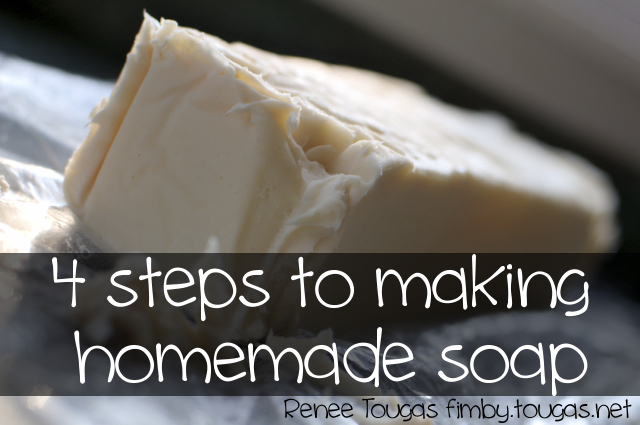
I got an e-mail from my aunt earlier this week. She recently visited my parents and became the recipient of some of my soap (my mom keeps a stash) and now wants to make some for herself.
A quick note about my aunt, she's actually only 5 years older than me and we were roommates during her last and my first year of university. This little side story has nothing to do with making soap.
She asked a few questions about getting started and I am happy to oblige and thought I'd share those tips here for the benefit of everyone interested in soap making.
Step 1: Learn the process
Basically cold process soap making (I don't know why it's called cold process) is a chemical reaction between a lye and water solution with fats/oils. From there it can be as simple or as complicated as you like. There are a lot of great web resources on soap making, here's a few I'm familiar with:
- A Beginner's Guide to Soapmaking from Small Notebook for a Simple Home.
- Miller's Homemade Soap Page Information compiled by Kathy Miller, perhaps the on-line bible of soapmaking.
There are many books on the subject. The one I used to get started is Clean, Naturally. It's kind of old but I like how simple the recipes are. You could check out these books also:
- The Soapmaker's Companion: A Comprehensive Guide with Recipes, Techniques & Know-How
- Soap Maker's Workshop: The Art and Craft of Natural Homemade Soap
- The Natural Soap Book: Making Herbal and Vegetable-Based Soaps
Step 2: Choose your recipe
After reading books and perusing websites you'll be either overwhelmed or inspired, maybe a bit of both. I highly recommend you start with a simple recipe that doesn't involve a lot of capital investment. If, after you make your first batch you're hooked, you can think about getting fancy.
Oils
The simplest recipe of all is pure castille soap. I have never tried that for 2 reasons:
- Olive oil is a relatively expensive oil to use exclusively for soap.
- I like to blend oils to achieve different properties.
If you want to give it a go check out this recipe for Pure Olive Oil Soap from Little House in the Suburbs.
Here's what I know about the properties of different oils - for the life of me I can't remember where I found this or I would give proper credit.
Properties of oils (for soapmaking)
- Hard, stable, long lasting - palm, lard, tallow
- Lathering - coconut, castor, palm kernel
- Moisturizing/Conditioning - olive oil, canola, sunflower, soybean
- Luxury/extra moisturizing - cocoa butter, shea butter, almond, hemp, jojoba
But I did start off by saying to keep it simple. So I recommend you watch my How to Make Simple Soap Video.
Alternately, you could try this basic recipe found in Clean, Naturally.
- 24 oz. Coconut oil
- 24 oz. Olive oil
- 38 oz. Vegetable shortening
- 12 oz. lye
- 32 oz. water
- 4 oz. essential oils of your choice, added at trace
This recipe will produce 32 bars approximately 3.5 oz.
This is a good recipe to start with because the ingredients are easily obtainable and relatively inexpensive.
Having said that, I don't follow it anymore because I don't like how the plants used for making shortening (soybean and cottonseed usually) are grown - heavily sprayed and such. But searching for ecologically sustainable alternatives isn't easy either. Nor does this recipe produce a really hard bar but I still recommend it for a first time around.
For more recipes you can check the few I've posted in Homemade Soap and Body Care Products.
Lye
If you decide to craft your own recipes you'll need to use a lye calculator to determine how much lye and water you'll need.
For example, if you want to make a batch of soap with 20 oz olive oil, 20 oz emu oil (oh yeah, that does exist) and 20 oz coconut oil you simply enter those values into the chart and it tells you how much lye and water you need. The science behind this part is rather tricky so just use the on-line tools available, they do all them math for you - something I've never even attempted.
A note about lye: I am repeatedly asked if you need lye to make cold process homemade soap. Yes, you do.
This is not melt and pour soap this is actual soap making. This is chemistry, mixing a strong alkali with oils (which contain fatty acids), to saponify the oils. Soap is saponified oils. It is the saponified oils that provide the cleaning action.
Don't be scared of using lye. Homemade soap makers have done it for years.
Essential oils & additives
Adding essential oils and good-for-skin natural additives is the really fun part of soap making.
Here you need to read other recipes and use your own creativity to come up with combinations you like. If you want to keep it simple to start, use a basic (& relatively inexpensive) lavender or peppermint essential oil.
And when I talk about essential oils I am not talking about fragrances which are chemically derived, I have no experience using them.
I love adding texture and color to my soaps but I've had some less than desirable results in some batches, ie: colors that don't turn out like I'd hoped. For beginners I'd start simple, maybe some cornmeal or oatmeal for an exfoliant. Or calendula flowers for color and skin healing properties.
Step 3: Find your supplies
This could possibly be step 2 because you don't want to pick a recipe with really exotic ingredients that are difficult to find.
Oils
If you choose a fairly basic recipe, like the one listed above, most of those oils can found in a grocery store. Here's a list of places to look:
- Grocery store - olive oil, shortening, canola oil, lard, soybean and others can be found easily.
- Health food store/Natural food stores - these might have a soap making section as does our little local store. This is where I often buy my coconut oil, palm oil and other luxury oils. However, you don't need to use food grade coconut oil, it will be more expensive than soap making grade oil.
- Local farm - if you decide to use animal fats you might be able to get these cheap from an animal producer.
- On-line/Mail order - If you can't find what you need locally or decide to start making soap in bulk you can order on-line. See the suppliers lists on Homemade Soap and Body Care.
Lye
I have to admit, finding this can be tricky. Many companies now offer lye via online mail ordering. Find a list of suppliers here or on my post Soap Making Supplies and Where to Buy Them.
Essential oils & additives
You can find these at most any health food store but they can be quite costly. I'm now looking into buying my essential oils in bulk from online companies.
Other plant based additives (for color, texture and skin healing properties) can be found in your garden, kitchen cupboard and the spice or bulk section at the grocery/health food store. I love this natural colorant's list at Muller Lane Farms.
Molds & Tools
You can use almost any container for a soap mold.
Shoeboxes or other cardboard boxes lined with plastic work really well. For years this is what I used.
I now have a wooden mold (that I line with re-used heavy plastic bags) that Damien made me for me. A mold should be fairly shallow and wide instead of deep and tall, lesson learned the hard way.
Almost all the other tools you need can be found in your kitchen. It's an absolute must to have a scale (maybe you could borrow one if you don't own one) and also a thermometer.
Certain tools can be used for both cooking food and making soap - glass & stainless steel bowls and utensils. But all wooden and plastics should be set aside for just soap making.
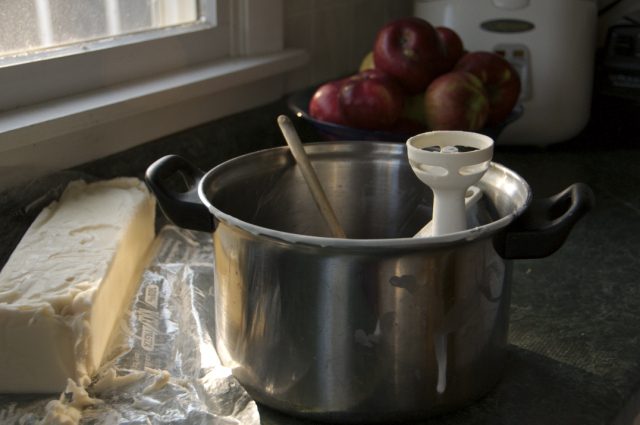
Step 4: Making the Soap
It could take you some time to get to the actual making the soap stage.
I find that making the soap is the easiest step of all, it's figuring out my recipe and gathering supplies that takes the most time and effort.
Plan to set aside at least 2-3 hours of uninterrupted time for your first batch. Be especially cautious if you have little ones in the house. Soap making is dangerous and you don't want to cause injury in the process.
I should add I've never had an accident but I wear rubber gloves and keep vinegar handy (to neutralize a lye spill) should anything happen. When I first started 2 years ago I did it after the kids were in bed. Now I make it while I'm cleaning up from supper and I just tell everyone to stay out of the kitchen.
Making the soap is a 2 stage process:
- Melting, mixing and pouring.
- Cutting and curing.
Soap sits in the mold at least 24 hours and then is removed and cut into bars. These bars then cure (the chemical process of turning oil into soap - called saponification is happening during this time) for about one month. At the end of that time they are ready to use.
Questions & Feedback
I hope it helps you get started in your soap making journey. Please ask questions you might have in the comments. (Updated later: I also have a Soap Q & A post with lots of questions and answers in the comments section.)
Also, if you know of any good books, resources or on-line companies please tell us.
Filed Under
Resource Library
-

nicola@which name? on Nov. 6, 2009, 5:07 a.m.
YOU ROCK! thank you so much! i can't read through your entire post right now (i KNOW as a blogger how long that post took you, so thank you again) but i am bookmarking it for my next quiet moment. nicola http://whichname.blogspot.com
nicola@which name?'s last blog post... tree
-

renee on Nov. 6, 2009, 12:56 p.m.
yeah it took a few hours but I'm glad you appreciate it. Hopefully it will help some would-be soap makers get started.
-
-
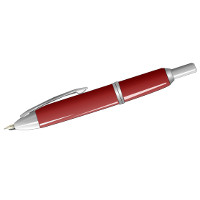
Jody on Nov. 6, 2009, 12:50 p.m.
Ditto! This is a definite bookmark! I have been the blessed recipient of some of your soap.... it is my favorite and I try to 'make it last' (so, I mix using your soaps in with rotating others in between ~ but your soap is fabulous!) Your orange one is my new favorite. Thank you for taking the time to share your little secrets and to share the links as well. I do so appreciate having the link right there to just 'click', as you know, I don't have alot of internet time.....so for me to say, "I'll have to look that site up some day"....Ya, that never, or seldom, comes to pass. Have a great day!
-

Jody on Nov. 6, 2009, 12:56 p.m.
Renee ~ there was no "subscribe" or "bookmark" options at the bottom of this post??? Did I miss them somehow?
-

renee on Nov. 6, 2009, 1:39 p.m.
I forgot to add that code at the end (it was late when I finally published this post). I've added it now :) thanks for reminding me.
-
-

Alisha on Nov. 7, 2009, 3:41 a.m.
Oh, wow! I am so glad that I found your site! jumps up and down and claps I feel like it's Christmas! I found you while I was prowling on 5orangepotatoes. I'm going to add you to my blog on my crafty blog list. :) Keep up the great work!
www.musingsofamanicmama.blogspot.com
-

Bec on Nov. 12, 2009, 4:03 p.m.
Hi Renee I made my first batch of soap yesterday. Tracing took 8 hours. I followed a recipe in a book I got from the library and I think the temperatures did it. This particular recipe said to mix the oil and lye at 95-98 degrees. Anyways, the question I have, do you use litmus paper to test the soap at the end of the 4 weeks? The books recommends this.
Virginia is coming over today to try out some more recipe's. I also found a soap making supplier really close to my home so I know I can get palm oil and cocoa butter from there.
I'll let you know how it goes.
-

renee on Nov. 12, 2009, 4:44 p.m.
I don't understand what you mean that tracing took you 8 hours. As in it took 8 hours to get to trace?? Were you hand stirring or using a mixer? Soap comes to trace usually a lot faster than that, like 10 minutes or so. I usually mix my oils & lye/water at 100-110 (with both being the same temperature within that range).
I don't use litmus paper. You could touch your tongue to it and it zings you it's not totally cured. Mine has always been totally cured after 4 weeks and I've only tongue tested once or twice. After that I've just assumed 4 weeks and it's good. I've never had problems with it hurting our skin or anything so I'm assuming it's ok.
-

April on Oct. 25, 2013, 3:50 p.m.
8 hours? Now that you have done completely by hand, never ever do it that way again! I did my first that way, but only took 2 hours. Now, with a STICK BLENDER, takes about 3 minutes to hit thin trace....5 minutes to complete and pour. Proper math means no reason to lithmus test...should be find by the next day, 4 weeks is cure to remove moisture not to worry about lye.
-
-

Ann on Nov. 16, 2009, 10:20 p.m.
I'm planning my first attempt at soap making. I've been inspired by your site!! My question is: Do you use refined or unrefined oils, or does it matter? Obviously there's a huge difference in cost. Hoping to get a batch done in time for Christmas gifts.
-

renee on Nov. 16, 2009, 11:07 p.m.
Honestly, I don't know. It doesn't say on the containers.
-

Pam K on Oct. 5, 2013, 2:37 p.m.
If you use refined oils is a matter of which oil you are talking about and what you want your soap to turn out like. Refining generally removes impurities, but it also tends to remove vitamins and other ingredients. Refining makes a colored oil turn white or off white usually, also. Only the fats in the oil are saponifiable (able to turn into soap), so anything else in the oils won't turn into soap during soap making, but is either damaged from the soap making process, or is kept as an additional property of the soap.
For instance, unrefined shea butter is super high in unsaponifables, and alone doesn't make a very good soap. As an add on oil in soap, it is fantastic for it's moisturizing properties. Extra virgin olive oil is very high in unsaponifiables, and most soap makers use pomace olive oil for that reason. Pomace is the very last pressing of the olives so that almost none of the unsaponifiables remain.
It is trickier to work with unrefined oils since the amount of unsaponifiables is undetermined and can cause problems with your lye to oil ratio. If you work with a refined oil, you know that nearly 100% or your oil will be saponified.
Unrefined oils are usually more costly as well, and a lot of the ingredients that you think will help your soap are actually destroyed in the soap making process. Refined oils are usually the cheapest to buy since they have the least amount of vitamins and other properties that are prized for cooking, healing, etc.
You may have to experiment with the same recipe using one batch with unrefined oils and one with refined oils to see which oils you like to use. At the same time, calculate your cost to see if the difference in the soaps is worth the cost.
-
-

old recipe for a new world on April 21, 2010, 7:02 p.m.
Hi Renee. Last month I made a batch of soap, much inspired by this post and the links you provide. My girlfriends and I made two small batches, including one that we totally winged with the lye calculator, and goat milk to boot. They came out great and we are getting ready for round two. This time I'm thinking quantity. Wondering what some of your favorite oils are to work with (I noticed you try to avoid shortening, and I also don't feel great about using palm oil--so anything needed as a substitute. Also, any thoughts on cleanup--we were suddenly very nervous when time came to wash the bowls and tools. Thanks for the inspiration and very helpful information. Kyce
-

renee on April 21, 2010, 11:30 p.m.
Kyce,
Winging it is the best part. I agree about quantity. It's just as much work to make large batch vs. a small so why not make a lot. It will take longer to cool the fats & lye and to reach trace though, might add an hour or so to your total time.
Choosing Oils
Favorite oils to work with... well I really like to work with a combination of olive, coconut, palm, soybean, castor and canola. Sometimes with the addition of cocoa butter or other more expensive oils. I mix and match to get soap with different properties - either hardness, lather, color etc...
Like I said, I think vegetable shortening is easy to find so a good oil to start with but I don't like how the oils are grown in this country. However, the growing and manufacturing of palm oil is also destructive. Ack! What's a soap maker to do.
Ideally I think soap makers should use what is grown locally and what they have access to. I don't follow this policy but I am moving in that direction. But it's hard to always be tweaking my recipe, never know what I'm going to get. You can use ANY fat for making soap it will just yield different qualities.
My most recipe experiment in local oils is Lavender Lemonade using a high percentage of Maine grown non-gmo canola oil.
Easy Clean up
I recently discovered a very easy way to do this. After you've scraped all you can into your molds let the soap pot and the soap utensils sit, that is all those items that have the mixed solution on them. Wait 24 hours and then wash them. The soap will have cured enough to actually suds up and can be used to clean the pots (or any dishes you might have about). Self cleaning!
The container you used for lye should be washed out immediately (mostly for safety reasons) with soap and water and/or vinegar to help neutralize the chemical reaction. You should also always have vinegar on hand for any emergencies.
-

lisa on April 20, 2017, 12:57 p.m.
soybeans are sprayed .. wouldn't think should be considered safe.
-
-
-

old recipe for a new world on April 22, 2010, 3:41 a.m.
Thanks so much for this information and encouragement. I love the self-cleaning dishes.
-

Erin on June 18, 2010, 2:38 p.m.
This is very helpful. Thank you! I was wondering if you know of a place (online?) to buy quality log soap molds. I know that they are probably easy to make, but at this point I would rather buy one. Any thoughts?
-

renee on June 18, 2010, 5:05 p.m.
Can't recommend a place but I'd try etsy. For years I just used a large box lined with plastic - works great.
-
-

Pam K on Oct. 5, 2013, 2:43 p.m.
There are a lot of places online to buy molds. It really depends on what style mold you want and how much you have to spend. Here are a few options:
http://www.wholesalesuppliesplus.com/StoreGroup.aspx?CatalogID=1&GroupID=261&GroupName=SOAP+MOLDS
http://www.brambleberry.com/Molds-C225.aspx
http://www.bulkapothecary.com/categories/soap-making/soap-molds.html
http://www.newdirectionsaromatics.com/soap-standard-soap-molds-c-6_63.html
http://symphonyscents.com/catalog/index.php?cPath=24&gclid=CPC44a32_7kCFUkS7AodUSMAQA
http://www.brambleberry.com/Soap-Molds-Guest-C72.aspx
-

Jackie on March 12, 2017, 7:16 p.m.
I'm a new soap maker. Wood molds are so expensive, so I used a drawer from my Grandma's old singer treadle sewing machine. I lined it with a heavy black trash bag. It was the perfect size and no damage to the wood.
-
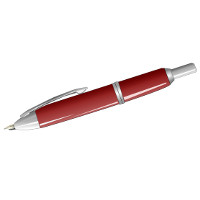
Rachel on June 25, 2010, 9:05 p.m.
You have inspired me...WOW...thank you thank you for all the work you put into this! Well organized and easy to understand! I have been wanting to make all my own soaps, shampoo, lotions etc... (I already make my own laundry soap which got me thinking about all the other possibilities!) I simply cannot wait to try this stuff!
Now...if I could just get my house to look like yours (clean and airy that is).... :)
-

Jennifer on July 1, 2010, 1:38 p.m.
Hello Renee, You inspired me to make our own lotion,which we've been thoroughly enjoying, and now I'm building up the courage to try soap making. I'm also in Maine.Do you think that Wholefoods would have the lye? Thank you for the time, effort and knowledge you put into this post and all of your replies. As a relatively novice blogger, I really admire your writing. Take Care.
-

renee on July 3, 2010, 3:41 a.m.
Jennifer, I don't know about Whole foods. I get my lye from the local health food store (you can e-mail me privately for that info) or at my local True Value hardware store. Because lye is used as a powerful drain cleaner you can sometimes find it in those type of stores. Unfortunately I think some people use lye for less than wholesome purposes (explosives?) so it can be hard to find.
Thanks for you kind words also. You're welcome.
-
-

payroll manager on July 13, 2011, 2:54 p.m.
I found you while I was prowling on 5orangepotatoes. I'm going to add you to my blog on my crafty blog list payroll manager
-

down2earthsmiles on Nov. 3, 2011, 4:33 a.m.
Hi there!
Thanks for providing so much detail. You really haven't missed anything out and I truly appreciate that.
My question to you was how mild does the soap get after the soaponification process is complete? Do you use a ph strip to test the acidity of the finished product? I wanted to make sure that my effort is worth while because if I was worried that it may turn out too high on the ph scale and maybe be just as harsh as the store bought kind.
Any suggestions on how to make it mild (maybe enough for used for a baby)?
Thanks in advance!
-

renee on Nov. 4, 2011, 6:14 p.m.
I have never used pH paper, though I've heard of that method. I personally feel, from my own experience with the soap on my skin and what other's tell me about my soaps, that these homemade bars are more moisturizing, and less harsh, than store bought. One test I've done is to touch it to my tongue. Yes, my tongue. If it tingles my tongue - no good, let it cure longer. Little, little babies don't need soap. For older babies I recommend an olive oil soap or soap with oats. Add a couple tbsps of ground up oats at trace. Very good for the skin. You can also superfat the soap which will make it more nourishing for the skin and dilute the lye that much more. I can't explain the process very well myself but you can google it. This lye calculator will give you superfat percentages if you want to do that. I always superfat my soaps at 5% (before trace).
-
-

Robin on Feb. 28, 2012, 5:40 p.m.
I have twpo tips - I do not use a therometer - I just melt the fats at a low temp, add the oils to cool it further, then wait for the lye to cool down - when both things are cool enough to touch the outside of the container, and about the same temp - I go ahead and mix. Second tip - the lids to copy paper boxes work great as molds, as they are shallow and wide. And can usually be used over and over. So, anyone who works in an office can usually score those for you.
-

Amythest on May 17, 2012, 12:28 a.m.
Hi Renee,
Thanks for this excellent blog post! I'm fed up with store0bought soap, even the supposedly "gentle" soaps, so I'm going to try this now. A question- can the basic recipe you provided her be halved? Thanks!
-

renee on May 17, 2012, 2:38 p.m.
Yes it can but I suggest running every new recipe, even a straight halving, through a lye calculator, just to check.
-
-
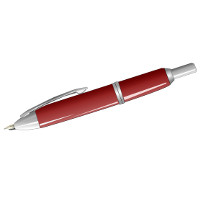
Lizette on June 2, 2012, 3:42 p.m.
Hi Renee,
i've been following your blog for a couple years now since I started homeschooling my daughter and I am aways impressed and inspired. I was wondering if you'd mind sharing what health food store you shopped at when you lived in Maine. I'm not far from Lewiston/Auburn and I'd love to be able to walk into a store with a soap makers section like you describe. I am going to try my first batch of soap soon! Thanks!!
-

renee on June 2, 2012, 4:44 p.m.
Axis Natural Foods in Auburn. Call before you go if you're looking for soap supplies. I haven't been there in over one year. Not sure what they still carry. But overall they are a great health food store!
-
-

lunabella on June 20, 2013, 1:13 p.m.
Hi Renee, i'm new at soap making, i make my own, my question is , where you buy emu oil? at reasonable price, i don't whant to pay 50.00 dollar for 2.oz. your page is VERY HELPFUL specially for beginners like myself i will be looking for you answer,
Tanks
lunabella
-

renee on June 20, 2013, 1:22 p.m.
Lunabella, happy to be of service! I've never used emu oil. I used it in this post only as an example.
-
-

Amethyst Samia on Oct. 3, 2013, 10:53 a.m.
I'm struggling to subscribe to the newsletter. Keeps telling me "access denied". Any suggestions?
Thanks!!
-

fanimo on Oct. 3, 2013, 1:55 p.m.
why is lye used in making soap... is it in all brands of commerical soap...what is the purpose of having lye in soap... thanks in advance for your reply...
-

renee on Oct. 3, 2013, 2:12 p.m.
It's necesssary to saponify the oils. I don't know how commercial soap is made. You can google for a more in-depth answer, see also Kathy Miller's FAQs page to answer this question.
-
-

Ginny on Oct. 3, 2013, 3:40 p.m.
Please don't be prompting canola oil at all. It is a man-made oil, not natural. We should notbe ingesting it nor placing it on the largeest organ of our body - the skin. If you take the time to read the labels you will fing that canola oil hs been replacing all the oils on the store shelves no matter what it says on the front.
-

Bridget on Oct. 3, 2013, 6:29 p.m.
Q-Do you have to use Lye in homemade soap?
-

renee on Oct. 5, 2013, 1:17 p.m.
Yes. Please see this comment.
-
-

Karly on Oct. 4, 2013, 12:56 p.m.
Hi, great article -- thanks! I was wondering what recipe you used specifically for that nice creamy bar pictured in the article? Thanks so much!
-

renee on Oct. 5, 2013, 1:15 p.m.
Karly, I believe that was a recipe of simple lard soap or vegetable shortening soap. But I can't recall. I have a recipe for that here.
-
-
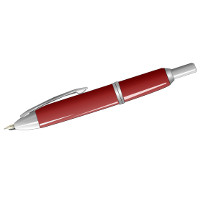
Jena Mannies on Oct. 5, 2013, 9:36 a.m.
Just wondering if I could use left over little pieces of soap from my shower???? Maybe, melt down & fill molds, and maybe and little color/or . Thanks, Jena Mannies
-

renee on Oct. 5, 2013, 1:12 p.m.
I have never done that but I'm sure you could google it. The tutorial I posted here is how to make soap from the raw ingredients.
-
-

Mimi on Oct. 21, 2013, 2:37 a.m.
The reason lye is hard to find, is that it is also used in the manufacture of methamphetamine. I get mine in bulk from Underground Gadgets, who also has a lot of other chemicals to (carefully) have fun with, and powdered activated charcoal, which is used as a soap colourant to make black that doesn't foam up black or colour your skin black.
-

Mimi on Oct. 21, 2013, 2:40 a.m.
All soap uses an alkali (which is what lye is), such as sodium hydroxide, or potassium hydroxide. You can also make your own using wood ashes, by stirring water into a bucket of ONLY wood ash, letting it sit a few days with repeated stirrings, then let it settle and pour the water off (carefully, with safety gear on) through a filter into another bucket and use as you would for the water/lye mix. Problem is, you don't know how strong the lye mix is. As for using litmus paper, another way to neutralize free lye in the soap is to wait until it cools/hardens, then chop it up, add a little water, melt it down, repeat the cooling/hardening process. This is what they call 'milling', so when you see 'triple milled' on soap, it means it was re-melted three times. It neutralizes any remaining raw lye and makes harder bars. And yes, you can chop up your old slivers of soap and melt them down with a little water.
-

Jody on Nov. 2, 2013, 8:52 p.m.
Since the ingredients are measured by weight rather than volume, i presume that you must add the container weight to the desired weight to determine the total weight in ounces for the liquids. For example, a 10 ounce measuring cup plus 24 ounces of coconut oil mean total weight of oil and cup must equal 34 ounces? And solids can be measured directly on the scale using a piece of wax paper or paper towel?? I've seen several different soap-making sites; but no one clarified this. Thanks.
-

renee on Nov. 3, 2013, 5:25 p.m.
Every measurement you see in my recipes (and I'm presuming other soap recipes) are the weight of the oil only. You can figure this out a couple ways.
Some scales have a tare option which lets you but a container on the scale and then set the scale to zero so what you weigh after that is just the the weight of the oils.
Otherwise, you measure the oils and the container and then subtract the weight of container. Simple math stuff.
I usually measure all my oils into a container of some kind (a metal or glass kitchen mixing bowl), one at a time. Measure, dump into the cooking pot I'm using for melting the oils. Measure, dump, etc.
This video might also help you.
-
-

katniku on Nov. 3, 2013, 4:49 p.m.
hi!... can i mix shea butter with papaya extract and calmansi (lime) extract? instead of vegetable oil or something, i wanna use shea butter... thanks!..
-

renee on Nov. 3, 2013, 5:19 p.m.
I have no idea about using extracts. But I do know this - you can make soap with any oil. Just make sure to use a lye calculator to check your lye and water amounts.
-
-

Cheryl on Nov. 10, 2013, 11:43 p.m.
New want-to-be soap maker. Thank you so much for bringing it "down" to my level. Explaining each step & the various oils!
-

renee on Nov. 11, 2013, 12:15 a.m.
Cheryl, you are so welcome.
I am getting ready to make a holiday batch of soap myself and getting excited again about mixing the different oils and essential oils and creating... something lovely.
-
-

Cheryl on Nov. 11, 2013, 12:26 a.m.
I started a fall course with Brambleberry, but it seems like it is for more experienced crafters than I. I, too, thought it would be great for homemade Christmas gifts, now I feel intimidated & unsure. Any certain recipe that you could recommend for a beginner?
-

renee on Nov. 11, 2013, 12:39 a.m.
Dear Cheryl,
I have the perfect recipe for you. See this page at FIMBY and then scroll down to Easy Soap Recipe. This is the recipe I learned to make soap with. This is the same recipe I mention in this post.
For that amount of carrier oil (the vegetable oils used to make the soap) you would want 4 oz. of essential oil. Or, if you are reluctant about that amount (the essential oils will cost as much as the other supplies all together) you can use less (smile).
I have a few soap tutorials on the blog that will explain the process thoroughly. A video and this post which you've read.
Also, I've recently discovered and enjoyed the Soamaking 101 video series at YouTube.
-
-

Bill G on April 30, 2015, 5:25 p.m.
Your recorded hyperlink does not work:
"Lye
If you decide to craft your own recipes you'll need to use a lye calculator to determine how much lye and water you'll need."
-

renee on April 30, 2015, 5:40 p.m.
Bill G. Thanks for the heads up. All fixed now. Try this one.
-
-

lisa on April 20, 2017, 12:52 p.m.
Hello, a soap maker I follow said most veggie shortening now is made with palm oil... just a FYI
-

Gowrishwari on Aug. 16, 2017, 5:20 p.m.
Hi .very good post. I followed the step and made few batches of soaps. I used it after curing . The soap is good but it dissolves very fast say within 3 to 4 days. What is the reason . I used only coconut oil.And had little eye irritation also. Don't know what's the reason . Can you please help me out. Thanks in advance
-

Renee Tougas on Aug. 17, 2017, 12:20 a.m.
I'm sorry I can't offer any assistance. This is a tried and true recipe for me but I haven't made it for years.
See this page for more soap resources: http://renee.tougas.net/blog/library/how-to-make-soap/
-
-

Camelia on Feb. 27, 2019, 10:18 a.m.
Zineglob is a producer and exporter of organic argan oil, prickly pear oil and cosmetic products since 2006. Based in Morocco, the company provides different products and services including private label for its worldwide customers, cerification and customized formula.
-

Essential natural Oils on May 22, 2019, 9:33 a.m.
I got organic carrier oils for myself 2 weeks back from Health & Beauty Natural Oils. It was effective in acne control and also helped reduced my skin pigmentation. I’m planning to buy more combinations for myself and family members too very soon. If you are also looking for the best "Essential Oils" so you visit here https://www.essentialnaturaloils.com/ .
You can subscribe to comments on this article using this form.
If you have already commented on this article, you do not need to do this, as you were automatically subscribed.
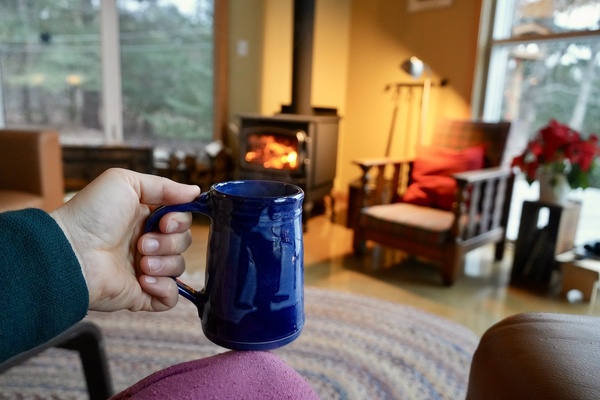

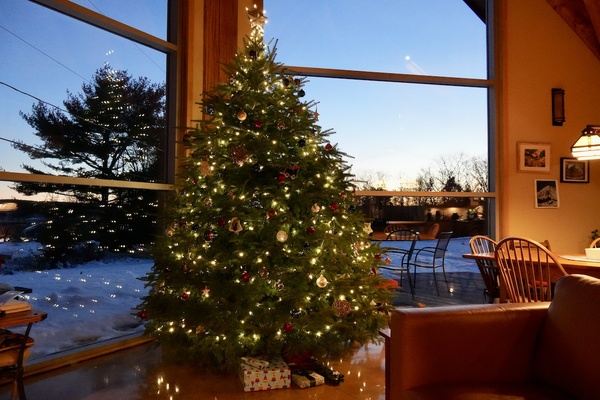
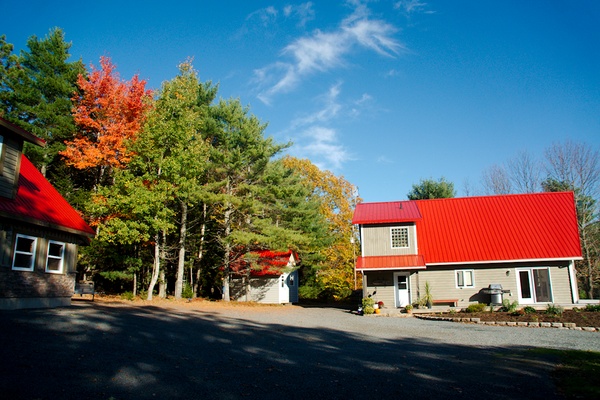
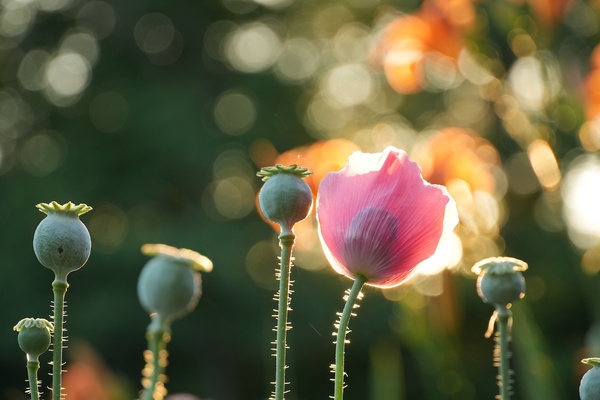
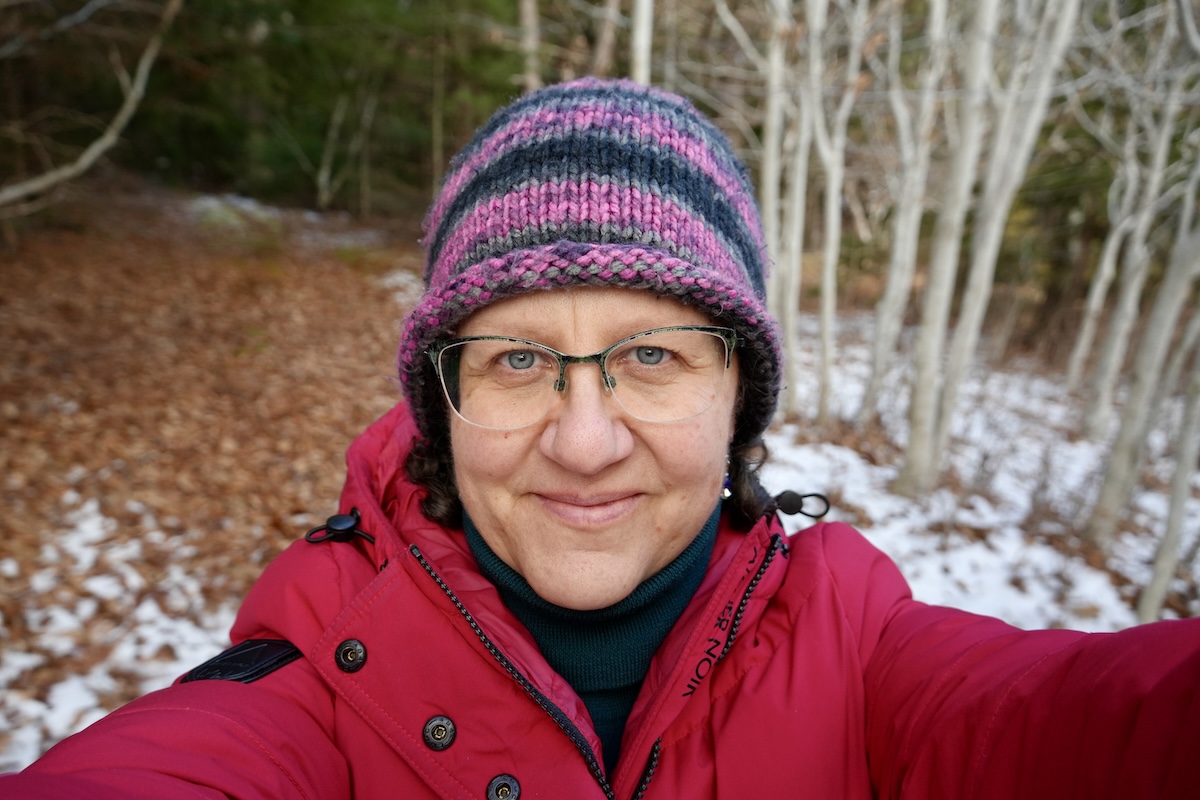
renee on Nov. 6, 2009, 3:13 a.m.
I'm going to kick comments off by answering a question my aunt sent: "Where do you get your palm oil from? Is it the red kind, is it palm shortening? I can't find it in the stores so I am checking on Amazon and am confused as to which one to order."
I buy the palm oil both at my local health food store and I've bought 1 gallon from Soaper's Choice. Next time around I'm buying sustainably harvested palm oil (not sure where from), I'm using up my current supply.
As far as I know palm oil is not red, though I have seen that. The kind I use is white. I don't think palm oil and palm shortening are the same thing. I would assume palm short. is hydrogenated. I wouldn't use a red oil unless you want a redish soap. I haven't ordered oils from Amazon so I don't know what to recommend there.
pam k on Oct. 3, 2013, 4:41 p.m.
Palm oil is originally red. As it is processed, and bleached, it loses the red and becomes white. Virgin palm is red.
renee on Oct. 5, 2013, 2:18 p.m.
Thanks Pam for clarifying this!
Sherry Morris on Oct. 20, 2013, 2:13 a.m.
I am on a septic system! This soap does sound great but will it clogg up my septic system?
renee on Oct. 21, 2013, 5:01 p.m.
I don't think so Sherry but don't take my word for it.